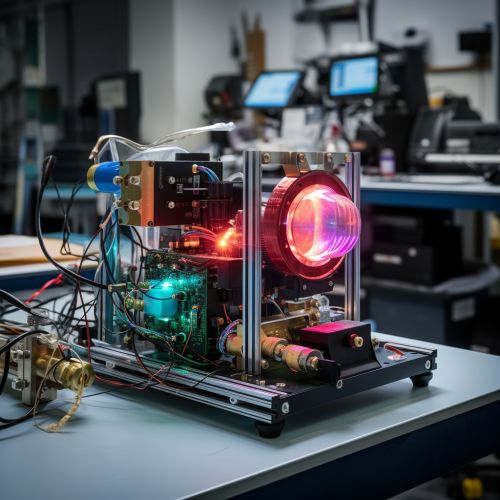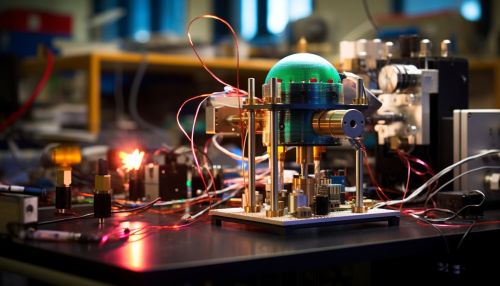Quantum Repeaters
Introduction
A quantum repeater is a device used in quantum communication to extend the range of quantum information transmission. It is a key component in the development of quantum networks, which are expected to revolutionize information technology by enabling secure, high-speed data transfer.


Quantum Communication and the Need for Quantum Repeaters
Quantum communication is based on the principles of quantum mechanics, a branch of physics that describes the behavior of particles at the smallest scales. Unlike classical communication, which uses bits to represent information, quantum communication uses quantum bits, or qubits, which can exist in multiple states simultaneously due to a phenomenon known as quantum superposition.
However, quantum communication faces a significant challenge: quantum states are very delicate and can be easily disturbed or lost due to interaction with the environment, a process known as quantum decoherence. This limits the distance over which quantum information can be reliably transmitted. To overcome this limitation, quantum repeaters are used.
Working Principle of Quantum Repeaters
Quantum repeaters work by using a process called quantum entanglement. This is a unique phenomenon in quantum mechanics where two or more particles become linked and the state of one particle is instantly connected to the state of the other, no matter how far apart they are.
In a quantum repeater, two qubits are entangled and then separated. One qubit is sent to the receiver, while the other remains at the repeater. When the transmitted qubit reaches the receiver, its state is measured. This measurement collapses the superposition of the qubit at the repeater, which can then be used to recreate the original quantum state.
Types of Quantum Repeaters
There are several types of quantum repeaters, each with its own advantages and disadvantages. The most common types are quantum memory-based repeaters and quantum error correction-based repeaters.
Quantum memory-based repeaters store the quantum state of a qubit for a certain period of time, allowing for the correction of errors before the state is transmitted. However, these repeaters require high-quality quantum memories, which are currently difficult to produce.
Quantum error correction-based repeaters, on the other hand, use error correction codes to detect and correct errors in the quantum state. These repeaters do not require quantum memory, but they do require a large number of physical qubits to encode a single logical qubit, which can be a challenge to implement.
Applications of Quantum Repeaters
Quantum repeaters have a wide range of applications in the field of quantum information technology. They are essential for the development of long-distance quantum communication networks, including quantum internet, which would allow for secure, high-speed data transfer.
In addition, quantum repeaters could also be used in quantum key distribution (QKD), a method of secure communication that uses quantum mechanics to ensure that the key is not intercepted or tampered with. Quantum repeaters could extend the range of QKD, making it more practical for real-world applications.
Future Directions
While quantum repeaters hold great promise, there are still many challenges to overcome before they can be widely used. These include improving the quality of quantum memories, increasing the rate of entanglement generation, and developing efficient error correction codes.
However, with ongoing research and technological advancements, it is expected that these challenges will be addressed in the coming years, paving the way for the widespread use of quantum repeaters and the realization of a global quantum network.
